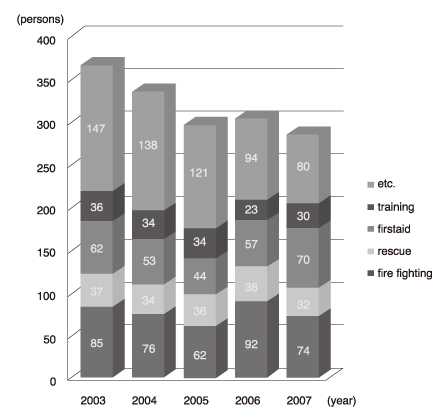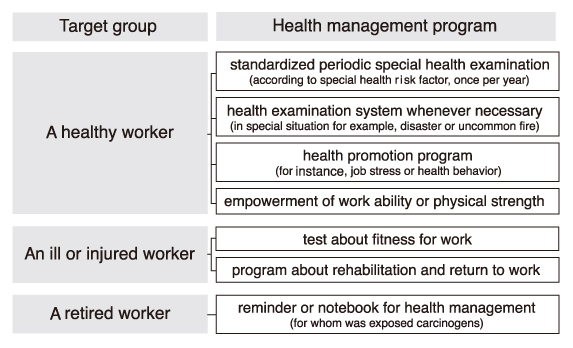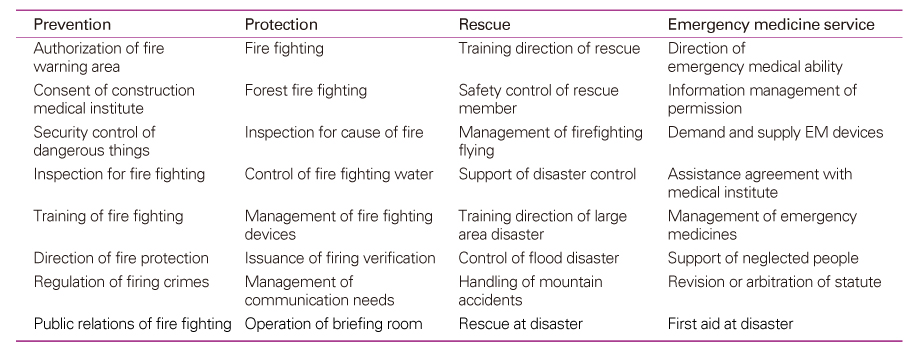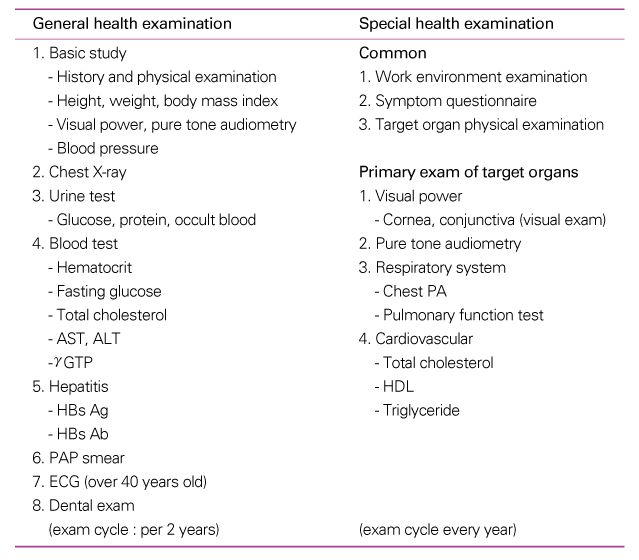1. Bogucki S, Rabinowitz PM. In: Rosenstock L, Cullen MR, Brodkin CA, Redlich CA, editor. Occupational health of police and firefighter. Textbook of clinical occupational and environmental medicine 2005;2nd ed. Philadelphia·Edinburgh·London·New York·St Louis·Sydney·Toronto: Elsevier Saunders. 272-281.
2. Haas NS, Gochfeld M, Robson MG, Wartenberg D. Latent health effects in firefighters. Int J Occup Environ Health 2003;9:95-103.
3. Kim M. Research about effectiveness and organizational traits of firefighting administration 1996;Korea University.
4. Park K. Public fire worker's job condition and it's improvement. J Korean Management Ass 2002;15:63-79.
5. The statistics of emergency management 2008;National Emergency Management Agency. 137-139.
6. Won JU. Firefighter and health. The Occupational Health 2006;214:18-25.
7. Huh KC. A study on the security of safety and health for fire fighters 2006;Graduated School of Management, Juonbuk National University. 22-23.
9. Kim KH, Kim JW, Kim SH. Influences of job stressors on psychosocial well-being, fatigue and sleep sufficiency among firefighters. Korean J Occup Environ Med 2006;18:232-245.
10. Kim SH, Kim JW, Kim JE, Son BC, Kim JH, Lee CH, Jang SH, Lee CK. Pulmonary function and respiratory symptoms of municipal fire officers in Busan. Korean J Occup Environ Med 2006;18:103-111.
11. Yoon SH, Choi SJ, Shin DH, Chung IS, Ha JS. Job stressors in subway workers and firemen. Korean J Occup Environ Med 2007;19:179-186.
12. Kwon SC, Song J, Lee SJ, Kim I, Koh J, Ryou H, Kim SH, Kim D, Jung SA. Posttraumatic stress symptoms and related factors in firefighters of a firestation. Korean J Occup Environ Med 2008;20:193-204.
13. Kim KS. Health management of fire officer around special periodic health examination of firefighter. The Occupational Health 2005;26:10-19.
16. Kang BS. Work related disease and health management of fire officer 2006;Graduated school of management, Hoseo University. 65-66.
18. NFTA 1582, Standard on medical requirements for firefighters 2007;Quincy, MA: National Fire Protection Association.
19. NFTA 1582, Standard on comprehensive occupational medical program for fire departments 2007;Quincy, MA: National Fire Protection Association.
20. Gerkin D. In: Orris P, Melius J, Duffy RM, editor. Firefighters: fitness for duty. State of art review-Firefighters' safety and health 1995;10):871-876.
21. Kang D, Davis LK, Hunt P, Kriebel D. Cancer incidence among male Massachusetts firefighters, 1987-2003. Am J Ind Med 2008;51:329-335.














